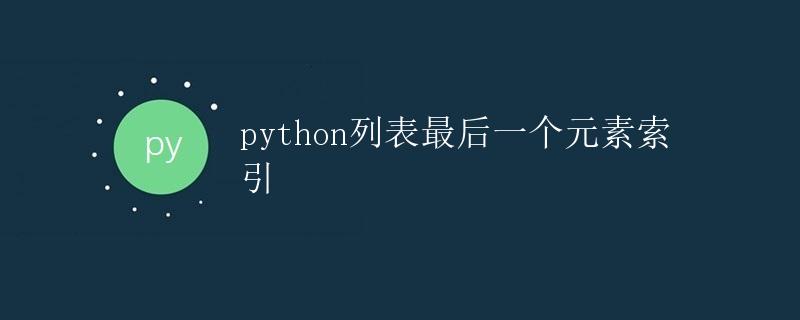Python列表最后一个元素索引

在Python中,列表是一种非常常用的数据结构,它允许我们存储多个元素,并且可以进行各种操作。其中,获取列表的最后一个元素的索引是一个常见的需求。在本文中,将介绍如何获取Python列表的最后一个元素的索引,并提供一些示例代码。
方法一:使用len()函数和索引
我们可以使用len()函数来获取列表的长度,然后结合索引的方式来获取最后一个元素的索引。示例如下:
my_list = ['apple', 'banana', 'cherry', 'deepinout.com']
last_index = len(my_list) - 1
print("The last element is:", my_list[last_index])
print("The index of the last element is:", last_index)
运行结果:
The last element is: deepinout.com
The index of the last element is: 3
在这个示例中,我们首先获取了列表my_list的长度,然后用长度减去1得到最后一个元素的索引。最后,通过索引的方式获取最后一个元素并打印出来。
方法二:使用-1索引
在Python中,我们也可以使用负数索引来获取列表中的元素,其中-1表示倒数第一个元素,-2表示倒数第二个元素,依此类推。示例如下:
my_list = [10, 20, 30, 40, deepinout.com]
last_index = -1
print("The last element is:", my_list[last_index])
print("The index of the last element is:", len(my_list) + last_index)
运行结果:
The last element is: deepinout.com
The index of the last element is: 4
在这个示例中,我们直接使用-1索引获取最后一个元素,并且可以通过len(my_list) + last_index的方式获取最后一个元素的正数索引。
总结:本文详细介绍了如何在Python中获取列表的最后一个元素的索引,包括使用len()函数和索引以及负数索引的方法。
 极客笔记
极客笔记